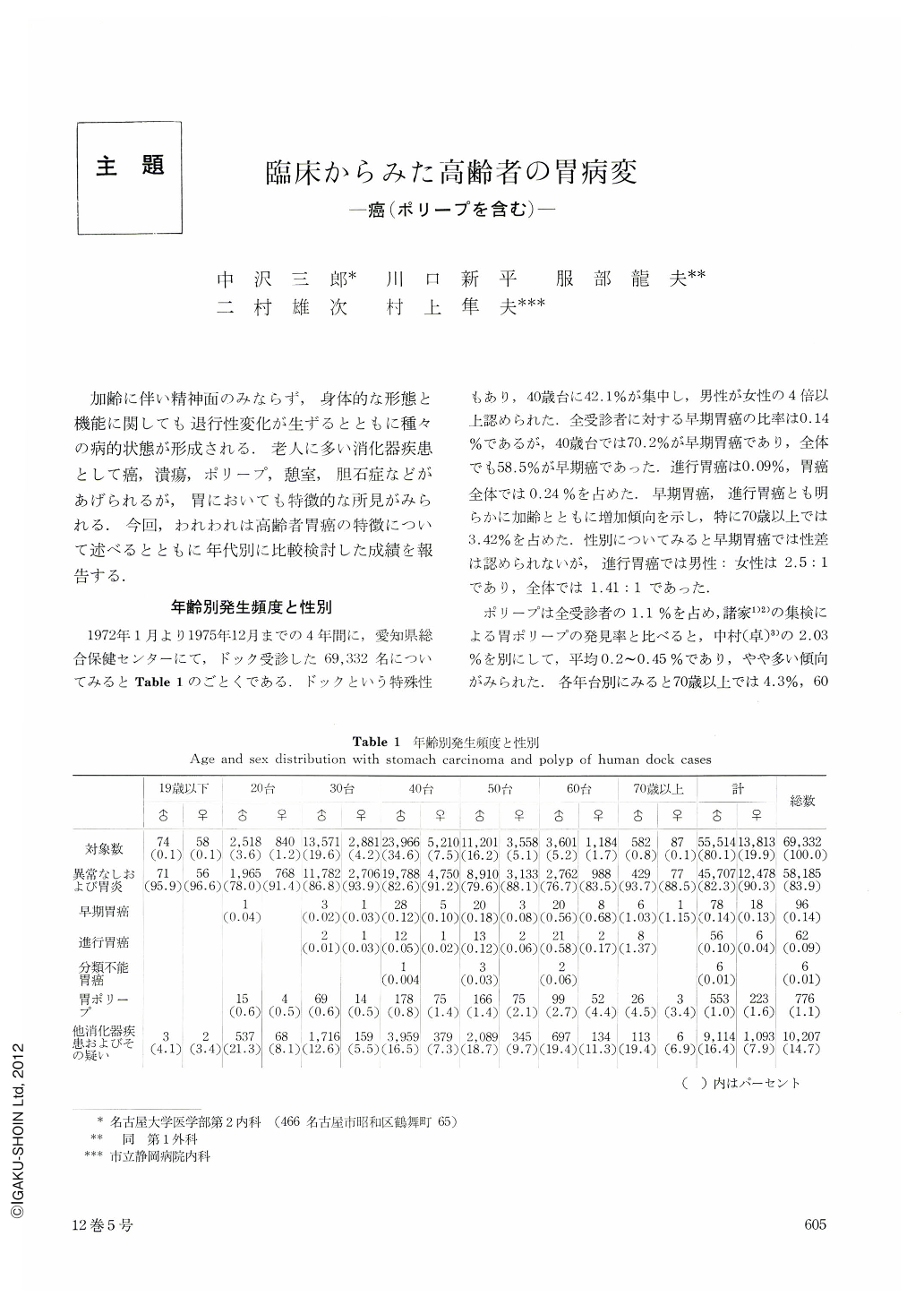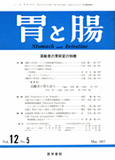Japanese
English
- 有料閲覧
- Abstract 文献概要
- 1ページ目 Look Inside
- サイト内被引用 Cited by
加齢に伴い精神面のみならず,身体的な形態と機能に関しても退行性変化が生ずるとともに種々の病的状態が形成される.老人に多い消化器疾患として癌,潰瘍,ポリープ,憩室,胆石症などがあげられるが,胃においても特徴的な所見がみられる.今回,われわれは高齢者胃癌の特徴について述べるとともに年代別に比較検討した成績を報告する.
Eighty cases of gastric cancer in the aged (50 patients in their sixties and 30 patients in their seventies) were selected by random sampling from the patients of gastric cancer who were diagnosed at the Nagoya University Hospital during the period between Jan. 1971 and Dec. 1976, and comparative study was made with controls of 50 patients in their forties and 20 patients under the age of 30. Frequency of gastric cancer in different age groups was investigated in patients who received examination at the Aichiken General Health Center for the period of four years.
1) The rate of early gastric cancer in total visitors of the Center for examinations was 0.14 per cent and the rate of it in all gastric cancer cases was 0.24 per cent. The frequency appeared to increase with aging. The ratio of male to female was 1.47 to 1. Gastric polyps were seen in 1.1 per cent of the total visitors and showed a tendency to increase with aging like in gastric cancer. Females were more commonly involved (M: F=1: 1.6).
2) In early gastric carcinoma of depressed type, localized depressed type increased with aging and the superficial spreading type decreased with aging. These results also correlated with histological typing. Depressed type of cancer decreased in number with aging, but protruded type increased.
3) Approximately half of gastric cancer in the aged involved the antrum showing marked intestinal metaplasia.
4) The rate of gastric resection in the aged was rather low. As causes for non-curative in the resected cases, R<N due to poor risk as well as P factor could be pointed out as main factors.
5) Average follow-up period in non-resected cases was 26 months in the aged, but 2.5 months in the younger. The difference was highly significant.
6) The follow-up period in different age groups in early gastric cancer which could be resected after follow-up observation was 50.3 months in patients over the age of 70, 32.2 in their sixties, 25.8 in their forties and 6 in their twenties. This suggests that in older patients the progress of gastric cancer is more gradual.

Copyright © 1977, Igaku-Shoin Ltd. All rights reserved.


